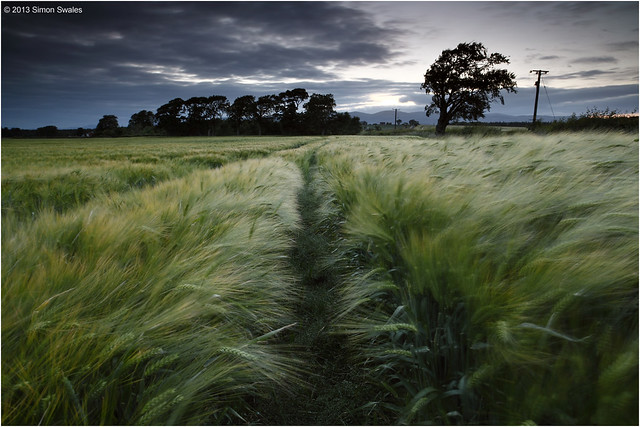For the overwhelming majority of landscape photographers knowing how to control Depth of Field is one of the fundamental requirements to improving our images.
The point where you a lens is focused is called the plane of critical focus and this will be the sharpest part of the picture. In front of and behind the plane of critical focus, the image becomes increasingly
blurred, and the points at which it becomes unacceptably out of focus
mark the limits of the depth of field. So as a definition, Depth of
Field (DoF) is the zone on either side of the plane of critical focus in which
the image is acceptable sharp.
In Landscape photography, if I want the horizon line (which will be at
infinity [∞] ) to be constantly in focus but also require as much DoF
as possible so that objects in the foreground are also in focus then I focus the lens so that Infinity just lies at the
farthest limit of the DoF. When the lens is focused this way the point of critical focus is called the Hyperfocal Distance.
The hyperfocal distance varies with the following:
- Focal length of lens used. The greater the focal length, the less DoF.
- Aperture. DoF increases when a smaller aperture is used.
- Lighting. Because sharp focus is very subjective there are certain lighting conditions which will give an apparent increase in the DoF like fog or low cloud/rain.
- Distance between the lens and the nearest object within the scene that requires to be in focus. The greater the distance the easier it is to control DoF.
- The size of the sensor in the camera. As far as DoF is concerned, generally speaking, the smaller the sensor the greater the depth of field.
For now it is safe to say that the maths involved in working out hyperfocal distances has been done by "Top Men", which has made it easy for me to produce my own hyperfocal distance charts which I laminate and keep in my bag for referring to when on location.
Below are copies for cameras with Full Frame sensors, Canon's APS-C sized sensors and Nikon's DX-Format sensors covering the most popular focal lengths for landscape photographers in their chosen format. Click to view each table at a larger size.
For those who would like to download a PDF version of each chart please click on the appropriate link below. Once downloaded the charts can be read by a .pdf file reader or loaded into Photoshop for conversion to another format. Once printed the table(s) can be cut out and laminated (it will be a handy A6 size) for keeping in your bag. Full instructions are given on each table.
DoF Guide for Full Frame Sensors. f/2.8 to f/5.6 DOWNLOAD
DoF Guide for Full Frame Sensors. f/8 to f/16 DOWNLOAD
DoF Guide for 1.6x Crop Frame Sensors. f/2.8 to f/5.6 DOWNLOAD
DoF Guide for 1.6x Crop Frame Sensors. f/8 to f/16 DOWNLOAD
DoF Guide for 1.5x Crop Frame Sensors. f/8 to f/16 DOWNLOAD






